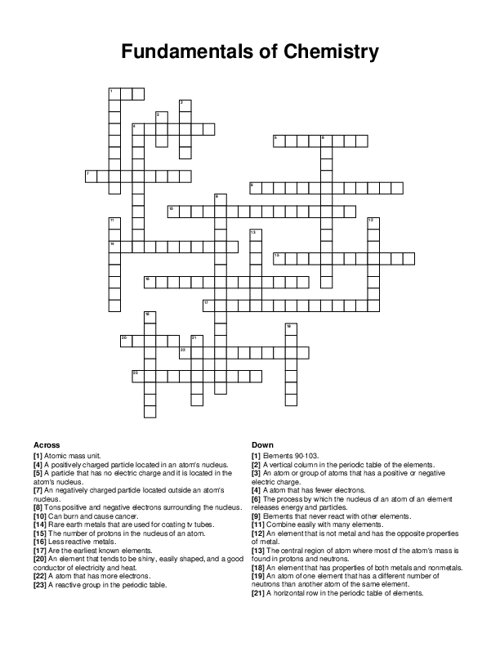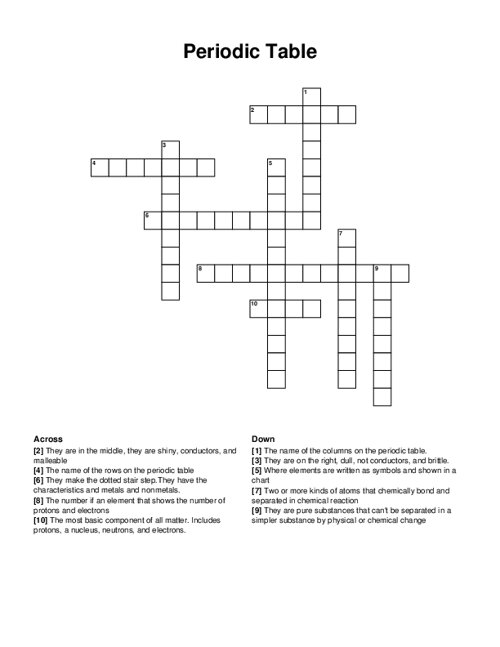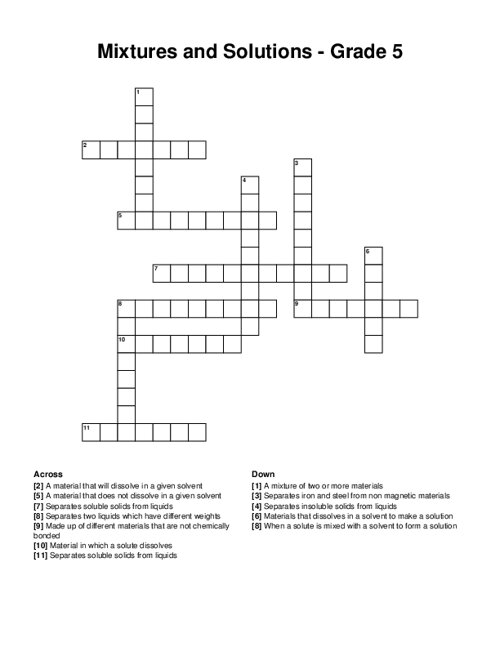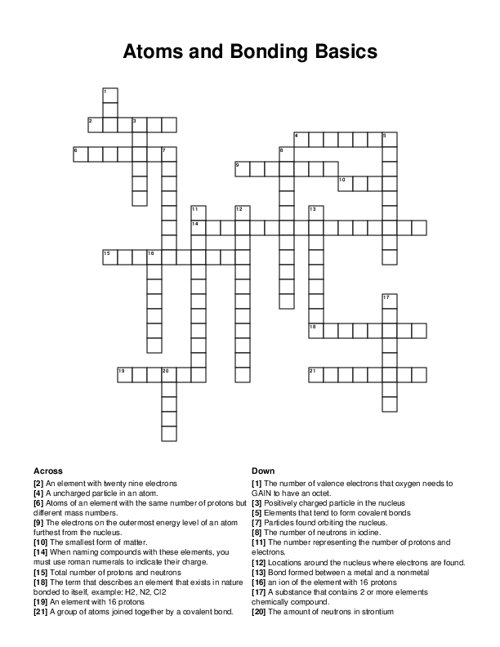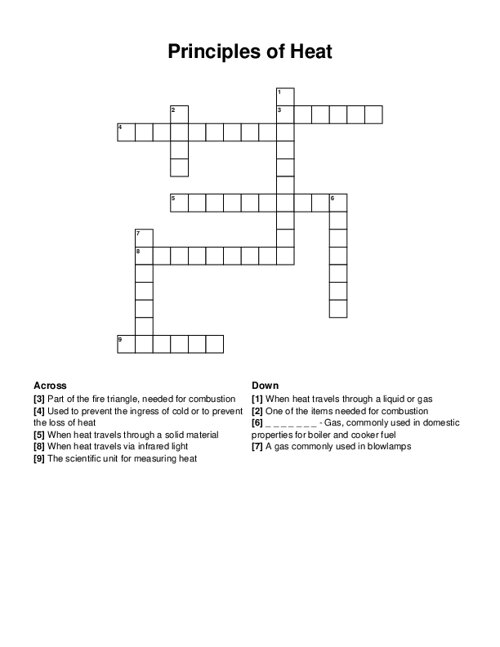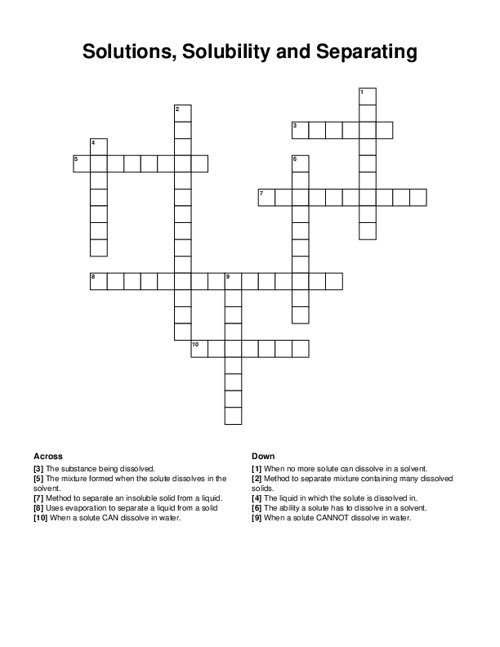Fundamentals of Chemistry Crossword Puzzle
Download and print this Fundamentals of Chemistry crossword puzzle.
Related puzzles:
QUESTIONS LIST:
- radioactive decay : can burn and cause cancer.
- amu : atomic mass unit.
- ion : an atom or group of atoms that has a positive or negative electric charge.
- neutrons : a particle that has no electric charge and it is located in the atom's nucleus.
- protons : a positively charged particle located in an atom's nucleus.
- radioactivity : the process by which the nucleus of an atom of an element releases energy and particles.
- metalloid : an element that has properties of both metals and nonmetals.
- negative ion : a atom that has more electrons.
- electron cloud : tons positive and negative electrons surrounding the nucleus.
- period : a horizontal row in the periodic table of elements.
- isotope : an atom of one element that has a different number of neutrons than another atom of the same element.
- group : a vertical column in the periodic table of the elements.
- lanthanides : rare earth metals that are used for coating tv tubes.
- noble [inert] gases : elements that never react with other elements.
- alkali metal : a reactive group in the periodic table.
- electrons : an negatively charged particle located outside an atom's nucleus.
- atomic number : the number of protons in the nucleus of an atom.
- transition metal : are the earliest known elements.
- actinides : elements 90-103.
- nonmetal : an element that is not metal and has the opposite properties of metal.
- halogens : combine easily with many elements.
- metal : an element that tends to be shiny, easily shaped, and a good conductor of electricity and heat.
- positive ion : a atom that has fewer electrons.
- alkaline metals : less reactive metals.
- nucleus : the central region of atom where most of the atom's mass is found in protons and neutrons.
